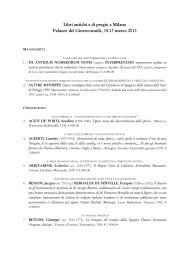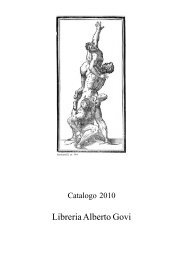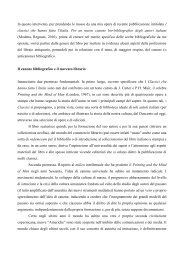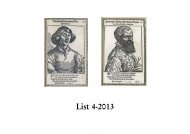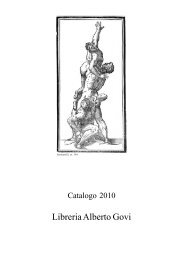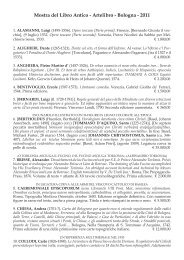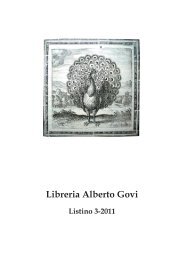versity of Padua, where he earned a degree in civil law in 1524. He cultivated humanist pursuits in the local circlesand his first work, the dialogue De republica Veneta (1526), in which Pietro Bembo and Niccolò Leonico Tommeoare the interlocutors, provide evidence of his literary talent. Sponsored by his brother Aurelio, Vergerio entered papalservice in 1532. Clement VII immediately put him to work as a diplomat, sending him first to Venice to promotea ligue against the Turks and then to central Europe as nuncio to Emperor Charles V’s brother Ferdinand. HereVergerio received his first exposure to current political and religious problems. His initial reaction to the Reformationwas viscereral repugnance and alarm about the immiment threat of this penetrating Italy. Early in 1535, PaulIII summoned him to Rome and gave him a new mandate: to assess support in central Europe for the convocationof an ecumenical council on which the Emperor was insisting. Vergerio crisscrosssed the empire, visiting numerousCatholic and some Protestant pricipalities and cities. Most of those on whom he called, among them Luther (encounteredunexpectedly at Wittenberg in November 1535), professed enthusiasm about the proposed council. Buthe gradually realized that for Paul III the project was merely a political ploy. He returned rather desillusioned toItaly in 1536, but confident that he would be appropriately rewarded for his services. But his nomination in May tothe bishopric of Capodistria, a see with meager revenues further eroded by a pension payable to a papal favourite,disappointed him. Seeking a protector who could get his pension lifted, he accepted hispitality from various Italianprinces and prelates, visited the courts of Francis I and Marguerite d’Angoulême, and attended the Worms-Regenburgcolloquy (1540-1541). During these travels he also encountered the major exponents of the ‘spirituali’ (e.g.Pietro Carnesecchi, Bernardino Ochino, Reginald Pole, Marcantonio Flaminio, Renée of France and Vittoria Colonna),all of whom were proponents of renewal within the church inspired by the concept of justification by faithalone through grace. In summer 1541 settled in his bishopric of Capodistria, taking the holy orders and beginningto implement his new convictions about reform. His vigourous efforts to root out abuses in the church arousedstrong opposition. Soon suspicion was awakened such that on December 13, 1544, a denunciation of Vergerio waslodged with the Venetian Inquisition. Although, after due examination, Vergerio was released, Cardinal MarcelloCervini, later Pope Marcellus II, took advantage of the fact that Vergerio was not yet formally absolved to preventhis participation in the council for which he had labored so many years. He then began a publishing activity whichturned more and more against the Roman Catholic Church. In connection with the painful case of Francesco Spiera(a lawyer, who had been forced to abjure and who died on December 27, 1549), Vergerio directed a sharp reply tothe bishop of Padua.Instead of responding to a second summons by the Nuncio Giovanni Della Casa (who had initially openedthe procedure against Vergerio) to appear before the tribunal in Venice, on May 1, 1549, he left Italy forever. Theexperiences at Spiera’s sick-bed had brought Vergerio to a decision. The twelve treatises which he produced at Baselin 1550 supply information regarding his position. Meanwhile, a second trial had been conducted in Venice inabsentio and was confirmed at Rome on July 3, 1549. Vergerio was convicted of heresy in 34 points, deposed fromhis episcopal dignity, and made subject to arrest (A. Santosuosso, Religion ‘more Veneto’ and the Trial of Pier PaoloVergerio, in: “Peter Martyr and the Italian Reform”, J.C. McLelland, ed., Waterloo, ON, 180, pp. 43-61). His ‘apostasy’,the first by a bishop, evoked great exitement on both sides of the Alps. At that time, however, he was in theSwiss Grisons, and became active in a brisk round of polemics. His themes were the papacy, its origin and policy;the jubilees; saint and relic worship, and the like. Vergerio continued in the Grisons till 1553, when he heeded a callfrom Duke Christoph of Württemberg to write and travel on behalf of Evangelical doctrine. While he never againset foot in Italy, in 1556 he made his way to Poland, and conferred with Duke Albrecht of Prussia. He was in Polandin 1559 with the two-fold object of meeting the moves of the Nuncio Luigi Lippomano, and of working counter toJohannes a Lasco. He sought permission to take part in the religious conference at Poissy in 1560, but he was notallowed to appear at the Council of Trent as the duke’s delegate. During all these years he continued his polemicalauthorship and worked toward the publication of his Opera, though only the first volume appeared (1563). He diedat Tübingen (cf. R.A. Pierce, Pier Paolo Vergerio the Propagandist, Roma, 2003, pp. 7-12).VD 16, ZV 15181; F. Hubert, Vergerios publizistische Thätigkeit nebst einer bibliographischen Übersicht, (Göttingen, 1893),no. 63. S. Pesante, Le Cinquecentine della biblioteca civica di Trieste, (Trieste, 1974), no. 2420; S. Cavazza, Pier PaoloVergerio nei Grigioni e in Valtellina (1549-1553): attività editoriale e polemica religiosa, in: “Riforma e società nei Grigionie Valchiavenna tra ‘500 e ‘600”, A Pastore, ed., Milan, 1991, p. 54 (who attributes the edition to D. Landolfi in Poschiavo).€ 5.500,00translated by Brucioli33) ARISTOTELES (384-322 a.C.) - BRUCIOLI, Antonio ed. (1497-1566). Aristotile Della Generatione &Corruttione, Tradotto dal Greco in Volgare Italiano. Per Antonio Bruccioli. Venezia, Bartolomeo & FrancescoImperatore, 1552.8vo; early 19 th century half calf, gilt title on spine (a bit rubbed); (4), 67, (1) ll. Title-page within an elaborate woodcutborder. Title-page border slightly shaved at the top edge, otherwise a very good copy.FIRST EDITION, dedicated by the translator to Ferrante Sanseverino, Prince of Salerno, of the first Italian versionof Aristotle’s De generazione et corruptione. The translation, made from the original Greek text, is by Antonio Brucioli,who during his career as editor translated many other works of Aristotle.Brucioli was born in Florence around 1497. In his youth, he attended the famous circle of humanists andscholars who met in the Orto Oricellari. After 1522 he traveled throughout Germany and France (especially Lyons),where he encountered for the first time the new reformed ideas, that he tried to widespread in Italy all along his life.- 36 -
After the flight of the Medici from Florence in 1527, Bruciolireturned to his native city to take part in establishingthe Republic but for his religious thoughts he quickly fellafoul of the dominant Savonarolan faction and was exiledin 1528. He than moved to Venice, where he spent muchof the rest of his life. Together with his brothers Francescoand Alessandro, he founded a printing house and starteda new business as bookseller. Between 1530 and 1532 hepublished his Italian translation of the New and Old Testament,later placed on the Index of Pope Paul IV. Brucioliwas twice tried for heresy: the first time in 1547, when hefled to the tolerant court of Ferrara and the protection ofRenata d’Este; a second time in 1558, when he was forcedto abjure. He spent most of the remainder of his life in extremepoverty. He died at Venice in 1566 (cf. É. Boillet, ed.,Antonio Brucioli. Humanisme et Évangélisme entre Réformeet Contre-Réforme, Actes du colloque de Tours, 20-21 mai2005, Paris, 2008, passim).Edit 16, CNCE2939; Index Aureliensis, 108.246; G. Spini,Bibliografia delle opere di Antonio Brucioli, in: “La Bibliofilia”,XLII, 1940, p. 165, no. 51. € 1.900,00with 44 woodcut illustrations and the reproduction of thetitle-page of the Inferni as editorial prospectus34) DONI, Anton Francesco (1513-1574). I Marmi delDoni, Academico Peregrino. Al Mag.co et Eccellente S.Antonio da Feltro dedicati. Venezia, Francesco Marcolini,1552.Four parts in one volume, 4to; contemporary flexible vellum,on the panels blind-stamped coat-of-arms of the sixthson of King George III of England, manuscript title on spine and bottom edge (a bit soiled and crumpled, minor lossat the bottom of the spine); 167, (1) pp. + 119, (1) pp. + 166, (2) pp. + 93, (3) pp. Printer’s devices on the title-pagesand on the verso of the last leaf of every section. Printed with two different Italic types. With 44 woodcut illustrationsin the text, including the portraits of Doni, Marcolini, Gelli, and Petrarca. At. 81 of the fourth part is a reproductionof the title-page of another Doni’s work, the Inferni, of which it is also announced the forthcoming publicationand it is described the content; this is probably the first case in the history of printing in which to promotethe imminent publication of a new work, its soon-to-be-released title-page is reproduced within another publishedwork. Wormtrack skillfully repaired in the blank margin of the first leaves, first title-page a bit soiled, otherwise anice genuine copy from the library of the prince August Frederick, duke of Sussex (1773-1843).FIRST EDITION of this collection of a great variety of texts consisting mostly of a series of imaginary dialoguesinvolving over one hundred different characters, some real, some fictive, who are portrayed conversing on themarble steps (I marmi) of the Duomo of Florence on a wide range of unrelated topics. The many aspects (editorial,iconografic, musical, etc.) of the work are meticulously investigated in G. Rizzarelli, ‘I Marmi’ di Anton FrancescoDoni: la storia, i generi e le arti, Florence, 2012, passim.The four parts of the Marmi were probably published and sold separately, but form a single volume. Theprinting of the work started in September 1552 and ended in January 1553. Although Doni’s works were usuallyreprinted several times, of the Marmi only a reprint is know, that issued in Venice by Giovanni Battista Bertoni in1609… A collection of various texts (tales, anecdotes, digressions, disputes, mainly written in a dialogue form), theauthor sets the scene on the steps of Piazza S. Liberata in Florence, where he overhears people of different townsand social ranks talking to each others (cf. S. Casali, Gli annali della tipografia veneziana di Francesco Marcolini, Bologna,1953, pp. 237-238).“Anche dentro i parametri doniani i Marmi costituiscono una punta estrema di bizzarria e di lunaticitàfatta di imprevedibili, sconnesse e spericolate congerie tematiche… Dai frequenti cataloghi e dai bruschi trapassi dauna meteria all’altra il lettore ricava una prima e spontanea impressione di quello sconcerto che si prova davanti aldisordine più radicale, accentuato ulteriormente dalla polifonia di voci di dialoganti senza volto, convenuti a casonella piazza fiorentina a raccontare storie e a discorrere di materie a volte astruse e a volte dozzinali, a presentaretesi che vengono accompagnate da cori di giudizi o commenti strampalati. L’immagine tradizionale di un Doni‘scapigliato’ e ribelle, creatore d’avanguardie e autore sfuggente, contraddittorio, sarcastico trova nei Marmi laconferma maggiore. Doni si è creata l’immagine di un autore che non vuole essere mai preso sul serio; e si può direche nei Marmi vi sia riuscito appieno. Ma un’irregolarità così sostenuta autorizza a sospettare una posa, un compiacimento,un’operazione non priva di sistematicità e di calcolo teso in primo luogo ad occultare qualsiasi impegnodi ‘regolarità’. E si deve ammettere che Doni sia riuscito appieno anche in questo calcolo, perché la sua immaginedi scrittore bizzarro si conserva senza scalfitture… I Marmi sono costellati di riferimenti a libri, i cui titoli sono citati- 37 -
- Page 1 and 2: Catalogue 2013Libreria Alberto Govi
- Page 3 and 4: Catalogue 2013Libreria Alberto Govi
- Page 5 and 6: an hitherto unknown philosophical m
- Page 7 and 8: ustica Lib. X., edited by Giorgio M
- Page 9 and 10: the end is furthermore printed the
- Page 11 and 12: without typographical data, but pro
- Page 13 and 14: Letteratura Italiana”, CXL, 1963,
- Page 15 and 16: as secondary only.The present two e
- Page 17 and 18: position as secretary at the court
- Page 19 and 20: From 1528 he was rector of the newl
- Page 21 and 22: famous personage was in high favor
- Page 23 and 24: Luigi Alamanni and Antonio Brucioli
- Page 25 and 26: In Pincio’s biography of Bernardo
- Page 27 and 28: Tempio della Fama; e così ne trass
- Page 29 and 30: power, and yet to make it possible
- Page 31 and 32: lini, Andrea Alciati, Lilio Gregori
- Page 33 and 34: phy in particular, was presented as
- Page 35: quale quello che lui auspicava, e l
- Page 39 and 40: to learn from their own experience
- Page 41 and 42: with some manuscript compositions p
- Page 43 and 44: death sentence issued against him o
- Page 45 and 46: the key work to Della Casa’s thou
- Page 47 and 48: important ones along with those of
- Page 49 and 50: a heavily annotated copy44) HORATIU
- Page 51 and 52: solitudine (1545), but undoubtedly
- Page 53 and 54: provide less description of patholo
- Page 55 and 56: the most up-to-date scientific ency
- Page 57 and 58: (pp. 4-10) written by the author hi
- Page 59 and 60: successivi alla consapevolezza che
- Page 61 and 62: night [February 22]. Rarely does a
- Page 63 and 64: subjects, including Saint-Gelais’
- Page 65 and 66: Catherine de’ Medici, succeeded o
- Page 67 and 68: losofico ed allegorico delle Metamo
- Page 69 and 70: The act concerning primogeniture is
- Page 71 and 72: are not many in number but who are
- Page 73 and 74: the Camilletta, his first work, Gut
- Page 75 and 76: selig, sich nit allein zu kunst geg
- Page 77 and 78: dle, or low. There are, however, pr
- Page 79 and 80: nity: ‘mercenaries should be done
- Page 81 and 82: colò Sfondrati), to whom the Causa
- Page 83 and 84: close of Semiramis’ career. Ninus
- Page 85 and 86: e contenuti matematici in Henri de
- Page 87 and 88:
The first Hungarian dictionary - Cr
- Page 89 and 90:
& T. Kovács, Deutschlernen in den
- Page 91 and 92:
chitectura’ des Wenzel Dietterlin
- Page 93 and 94:
neo-Latin anthology devoted exclusi
- Page 95 and 96:
as De la puissance ecclésiastique
- Page 97 and 98:
colazione was not eaten first thing
- Page 99 and 100:
advanced both the technical and the
- Page 101 and 102:
di Giorgio Zorzi, ambasciatore in O
- Page 103 and 104:
the Misnah100) MISNAYOT MESUDAR NAS
- Page 105 and 106:
the task of taking part to the nego
- Page 107 and 108:
This is the only iconological work
- Page 109 and 110:
on that occasion, were described an
- Page 111 and 112:
millo Camilliani, Francesco’s son
- Page 113 and 114:
Blanchard, Correggio and Mignard, R
- Page 115 and 116:
di Cicerone d’ottime antiche stam
- Page 117 and 118:
Pietro Aretino125) MAZZUCHELLI, Gio
- Page 119 and 120:
music129) TESTORI, Carlo Giovanni (
- Page 121 and 122:
Vol. VIII (1773): pp. (6), 854 with
- Page 123 and 124:
Di Felice e Gregorio Fontana, 1905,
- Page 125 and 126:
Cicognara, no. 190 (“Nelle quattr
- Page 127 and 128:
mo: fonti, theorie, modelli, 1750-1
- Page 129 and 130:
commentary on the treaty on shabbat
- Page 131 and 132:
poet laureate of Austria, and he le
- Page 133 and 134:
geo-political situation of the regi
- Page 135 and 136:
ope collecting views and pictures o
- Page 137 and 138:
inc.), 100 numbered engraved plates
- Page 139 and 140:
a gift from Emperor Napoléon III t
- Page 141 and 142:
Ardène, no. 123Caprara, no. 103 Tr
- Page 143 and 144:
Speckle, no. 73 Besson, no. 60- 143



